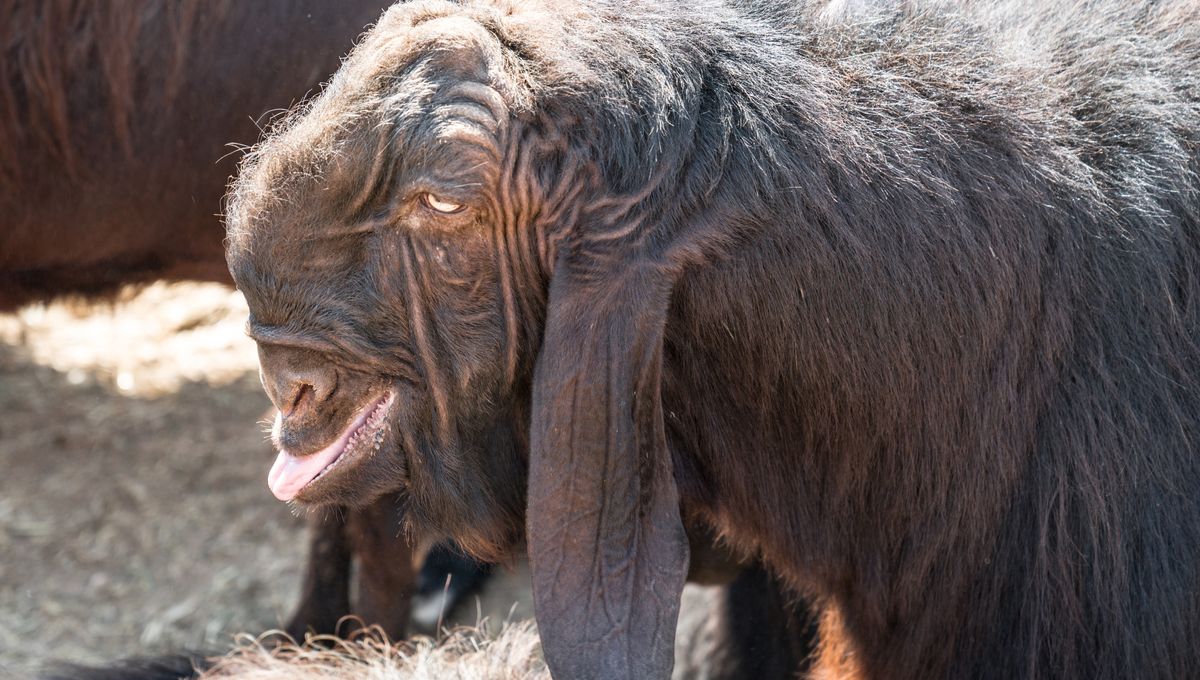
The internet loves a goat, whether they’re craving that mineral or screaming to Taylor Swift. There’s one breed, however, that’s repeatedly found viral fame not because of its salt-seeking escapades or musical abilities, but because, well, it’s just plain bizarre-looking.
What is this unusual creature that one TikTok user described as “if you typed ‘Renaissance-era nightmare goat’ into an AI image generator”? Why the Damascus goat, of course.
This particular breed first piqued wider public interest back in 2018 when a video of a “monster” goat started doing the rounds on social media, featuring a flat face, prominent overbite, and a bulging forehead. Not to mention, the goat was also absolutely enormous.
But while it’s perhaps the most famous example of the breed, a lot of Damascus goats don’t actually look like that. Some of the distinguishing features are still there, but they’re far more toned-down in livestock populations.
For example, they’re still a pretty large breed compared to other goats, standing at around 78 centimeters (31 inches) when fully grown, and they do usually have fairly blunt snouts – it’s just nowhere near as exaggerated. Unfortunately for them, even regular Damascus goats also bear a passing resemblance to Jar Jar Binks, being born with pendulous ears that can make up nearly half of their height.
So why do some Damascus goats look so different? It’s likely the result of years of selective breeding for the traits that gave them their fame.
Though native to Syria (hence the name), these goats were introduced to Cyprus around 80 years ago as a livestock breed and underwent decades of selective breeding to create an animal that could produce lots of milk and make for a popular meat.
In that time, it seems people also took a fancy to the Damascus goats’ more unusual features and entered them into beauty contests. Breeders likely mated together those with the most prominent features and, after generations and generations, wound up with the kind of animal that was almost inevitably going to become internet famous, whether people love it or think it’s incredibly cursed.
The creation of “designer breeds” for such a purpose is far from unusual, which isn’t a surprise when you find out how lucrative it is. The winner of a 2008 contest in Riyadh, Saudi Arabia, to find the most beautiful Damascus goat was bought by its owners for 150,000 Riyals, worth around $40,000 at the time.
Whether that fame and fortune comes at a price is unclear; designer animals breeds like pugs, for example, can have all sorts of health problems.
As for whether or not the Damascus goat is worthy of a beauty pageant crown – we’ll leave that up to you.
Source Link: Damascus Goats: The Bizarre-Looking Stars Of Animal Beauty Pageants